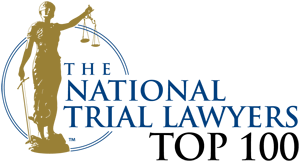On Thursday, January 14, 2022, the U.S. Supreme Court issued a ruling on two cases that challenged the Occupational Safety and Health Administration (OSHA) ‘s authority to make a vaccine-or-test mandate for private employees and healthcare workers. In a 6-3 decision, the Court invalidated the Biden administration’s vaccine-or-test law for large employers. It found that OSHA exceeded its power in issuing the mandate. However, by a vote of 5-4, the Court allowed OSHA to temporarily enforce a vaccine mandate for health care workers at facilities that receive federal funding.
OSHA’s Vaccine-or-Test Rules
On November 5, 2021, the Occupational Safety and Health Administration, known as OSHA, issued an emergency temporary standard (ETS) to minimize the risk of COVID-19 spread in the workplace. The ETS requires employers with 100 employees or more to establish a vaccination policy. The policy requires employees to be fully vaccinated. Alternatively, those not vaccinated are required to submit to a weekly COVID test. Non-vaccinated employees must wear a mask to minimize transmission in the workplace.
The ETS places the responsibility with the employer to provide time off to receive the vaccine and recover from it. The citations for non-compliance are steep. OSHA has the authority to issue $13,653 per violation when it’s classified as severe. The fees rise to $136,532 if the employer is in willful violation, or if the employer repeats a violation.
The government expected the mandate to cover 84 million private-sector workers. However, once the COVID ETS took effect, there were several challenges. On November 6, 2021, the U.S. Court of Appeals for the Fifth Circuit issued a stay, meaning that they paused the law from taking effect. On December 17, 2021, the U.S. Court of Appeals for the Sixth Circuit lifted the stay. OSHA moved forward implementing the ETS to employers with 100 or more employees.
In December, these two separate cases (the private-sector vaccine-or-test mandate and the healthcare workers mandate) were presented to the Supreme Court on an emergency basis. In a rare move, the Supreme Court decided to accelerate the case to listen to arguments. The issue before the Supreme Court was whether the OSHA mandate can remain in place while the lower court hears all the challenges against its legality proceed in the lower courts.
The Supreme Court’s Decision
The majority of the justices (six) saw OSHA’s vaccine-or-test mandate for large employers as a “significant encroachment into the lives – and health – of a vast number of employees.” The majority view of the Supreme Court was that a federal agency, such as the Department of Labor, cannot make such a ruling. Paramount to the Supreme Court’s decision was who has the power to regulate public health and safety? For some on the bench, it’s Congress. Others would say it’s Congress and each individual state.
The minority, Justices Breyer, Sotomayor, and Kagan, believe that OSHA should regulate safety and public health issues at the workplace. In a dissenting opinion, the justices concluded that OSHA has expertise in workplace safety. It is also a federal agency that is held accountable.
The majority of the Court found that Congress gave OSHA the responsibility to establish safety standards in the workplace but not to create and enforce “broad public health measures.” For six of the three justices sitting on the bench, that power is reserved for Congress. Only Congress can speak directly as to whether it decides to give a federal agency the ability to “exercise powers of vast economic and political significance.” In this case, it found that Congress did not.
Enforcement of the vaccine-or-test mandate will remain on hold. Florida, Georgia, and Alabama filed a challenge to the OSHA mandate in November 2021. The case has been consolidated with other challenges before the U.S. Court of Appeals for the Sixth Circuit. The Sixth Circuit, based in Ohio, had previously allowed the mandate to move forward while the challenges to the rule were decided. However, the Supreme Court’s decision reversed that ruling.
The Healthcare Vaccine Case
In Biden v. Missouri, the Supreme Court allowed the Biden administration to enforce a nationwide rule that mostly all health care workers at facilities that participate in the Medicare and Medicaid program to be fully vaccinated against COVID-19. Exemptions to the vaccine requirement include whether an individual qualifies for a medical or religious exemption.
This rule was also issued in November 2021. However, two federal district courts, Missouri and Louisiana, stayed those rules from being enforced.
What is the Future of OSHA ETS Mandate?
At this point, the only thing that is clear is that employers with 100 or more employees do not need to comply with the vaccine-or-test mandate.
The future of the mandate has been cast into serious doubt. The Supreme Court’s decision only issued a ruling to stay the vaccine-or-test mandate until a final resolution is settled. However, its decision also indicated that those seeking to invalidate the claim are likely to succeed.



